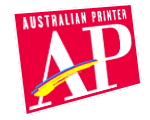Tags:
England’s oldest surviving printed document, an indulgence printed by William Caxton in 1476, went on show in London earlier this month for the first time in living memory. Created in England’s first print shop in Westminster on December 13, 1476, the rare document is on public display at the National Archives in Kew, south London.The document is one of several key historical artifacts at a free exhibition, "Movers and Shakers: Geoffrey Chaucer to Elton John", open until the end of May.
An indulgence is a certificate written in Latin and issued by the church, giving the person who received it a reduction in the length of time that they had to endure in Purgatory (the place where souls were thought to go after death to spend time suffering before going on to heaven) in return for support or aid to church causes.
The indulgence is signed by John, Abbot of Abingdon, for a couple, Henry and Katherine Langley for their efforts in funding the raising of a fleet to attack the Turks, who had just captured Constantinople.
Caxton was born in Kent in 1421 and worked abroad as a diplomat and merchant. While in Europe, he became interested in the new technology of printing developed by Johannes Gutenberg during the early 1450s.
In the Rhineland, craftsmen were accustomed to building grape presses for making wine and applied the same methods to building printing presses.
Upon his return to England, Caxton set up a printing shop near Westminster Abbey where he printed more than 100 books before he died, aged 70, in 1491.
Using a hand-press, which sought to emulate the handwritten form, Caxton produced the first printed book in England, Dictes or Sayengis of the Philosophres (""Sayings of the Philosophers") in 1477. He was later to print Geoffrey Chaucer’s Canterbury Tales.
Except for minor changes, the design of the flat bed wooden hand-press used in Caxton’s printing house remained largely the same for over 350 years.
In the printing process, ink was spread over the raised surfaces of individual metal letters held within a frame. The printer then pressed this against a sheet of paper, screwing down the press by hand.
Printing revolutionised life in Europe where previously, all manuscript books had to be copied out carefully and slowly by hand, a very expensive process.
With printing, it was possible to produce many copies of books both cheaper and faster. The result was that books and therefore ideas circulated much faster and more people had access to information.
For those fortunate enough to be in London between now and the end of May 2005, the National Archives is off Ruskin Avenue, Kew, Richmond, Surrey.
The nearest station to the Kew office is Kew Gardens (Underground - District line and Railway - Silverlink Metro / North London line). Kew Gardens is in both zone 3 and 4, and the journey from central London to Kew takes about 40 minutes. It is a short walk from the station via Ruskin Avenue to The National Archives.






